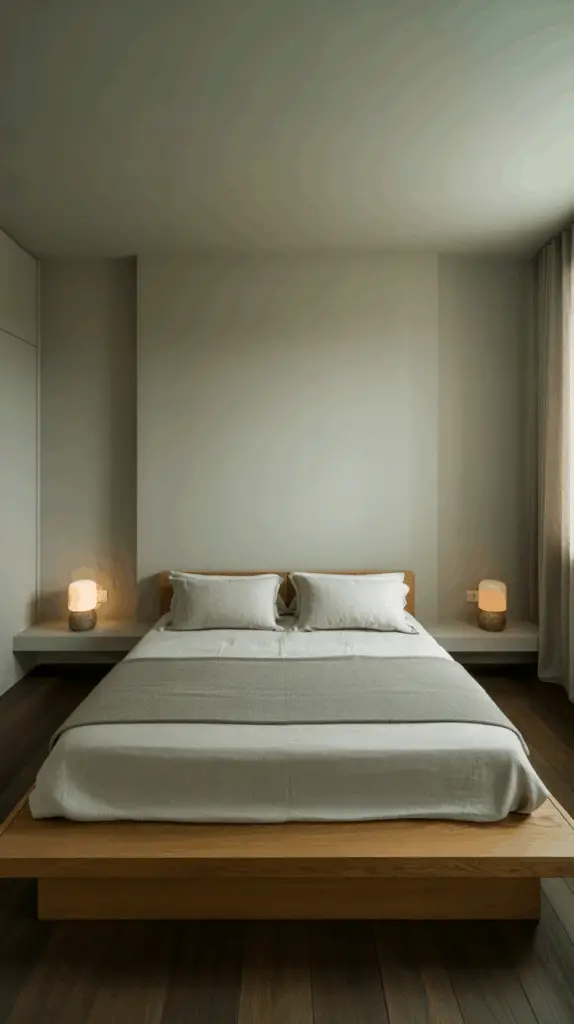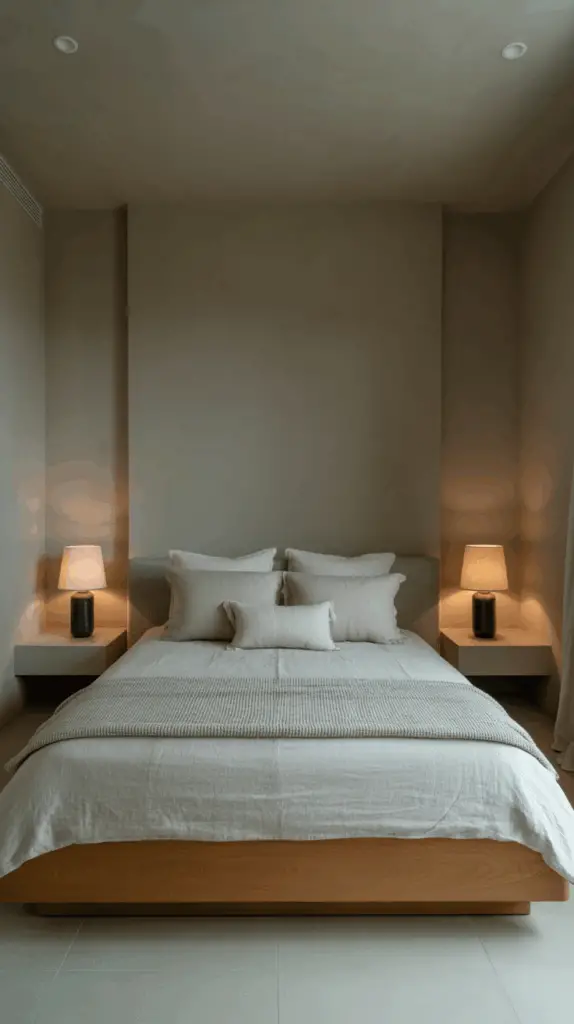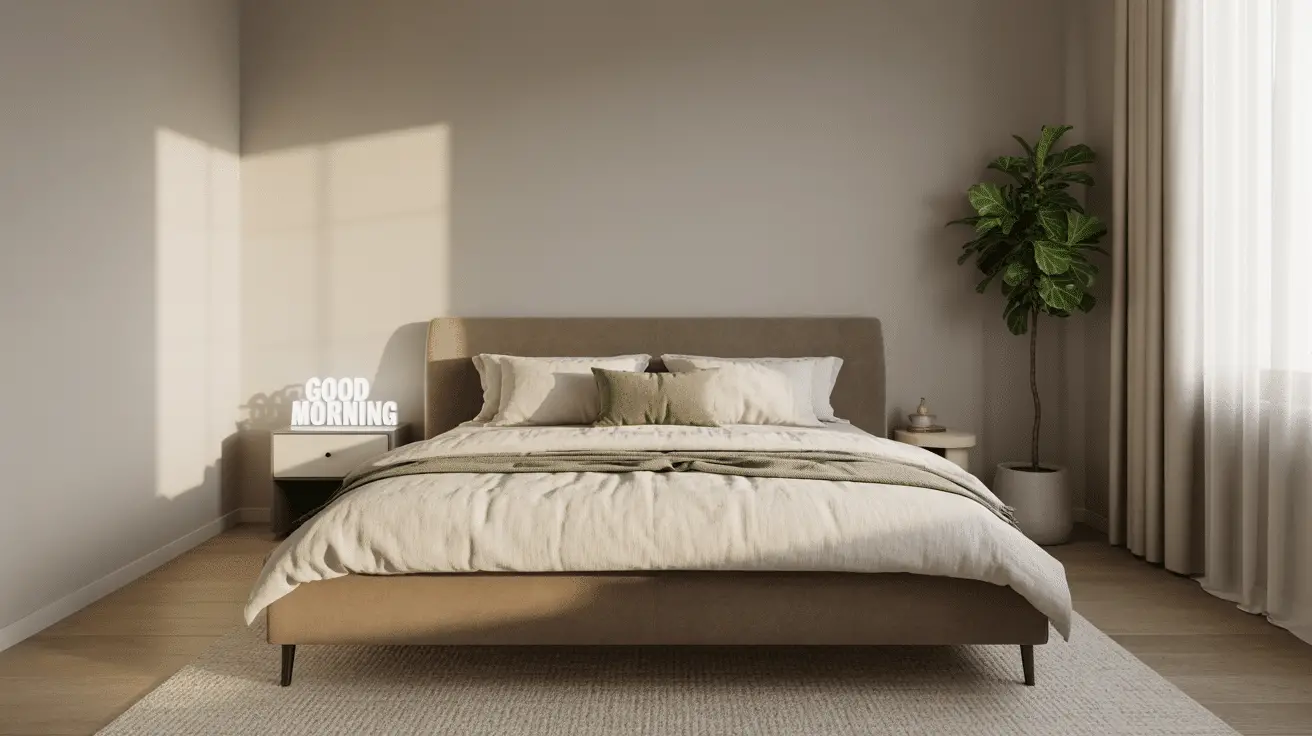Modern Primary Bedroom Designs for a Calm Retreat: Create Your Serene Sanctuary
Table of Contents
Introduction
According to the National Sleep Foundation, nearly 62% of adults struggle with getting enough restful sleep each week. While factors like lifestyle and stress play major roles, the design of your primary bedroom can significantly impact the quality of your rest. A cluttered, poorly lit, or overly stimulating space can keep your mind racing long after your head hits the pillow. Conversely, a thoughtfully designed bedroom can soothe your senses, encourage relaxation, and improve sleep quality.
That’s why modern primary bedroom designs for calm retreats have become such a powerful trend in home décor. These spaces go beyond aesthetics—they’re about functionality, balance, and creating a sanctuary where both body and mind can reset. From calming color palettes to natural materials, streamlined furniture, and lighting that sets the right mood, a modern bedroom emphasizes serenity without sacrificing style.
In this article, we’ll explore a range of ideas to help you transform your bedroom into a calm retreat. You’ll learn how to curate a peaceful color scheme, embrace minimalism, integrate nature, balance lighting, and choose furniture that supports rest and relaxation. Each section provides practical insights and examples, ensuring your space becomes not only beautiful but restorative.
Calming Color Palettes for Restful Bedrooms
Color is one of the most influential elements in setting the tone of your bedroom. Modern calm retreats often favor neutral and muted shades—soft grays, warm beiges, earthy taupes, and airy whites—because they provide a sense of balance and tranquility. These colors allow your bedroom to feel open and uncluttered while reducing visual noise.
For those who prefer subtle vibrancy, muted blues and sage greens are excellent additions. Studies in color psychology suggest that blue tones lower heart rate and promote relaxation, while greens evoke natural harmony and balance. The goal is to create a soothing backdrop that encourages rest without overstimulating your senses.
Layering shades within a single palette also adds depth and dimension. For instance, pairing light gray walls with charcoal accents, cream bedding, and wooden finishes creates harmony while preventing monotony. Accent colors can be introduced sparingly through throws, cushions, or artwork to keep the space from feeling too sterile.
Color Inspiration Table
| Base Palette | Accent Options | Mood Effect |
| Soft gray + white | Charcoal, navy | Modern calm |
| Beige + cream | Sage green, blush | Cozy and warm |
| Taupe + ivory | Black, gold | Sophisticated serenity |
| Pale blue + white | Natural wood | Airy and refreshing |
Embracing Minimalism for Serenity
Minimalism lies at the heart of calm, modern bedroom design. By removing unnecessary distractions, you create a space that fosters relaxation. This doesn’t mean your bedroom should feel empty or sterile; instead, every piece should have a purpose.
Start with essential furniture: a bed, storage solutions, and perhaps a nightstand. Opt for pieces with clean lines and functional design. Low platform beds, built-in wardrobes, and floating nightstands help keep the room visually open while offering practical storage.
The minimalist approach extends to décor as well. Instead of filling your walls with multiple artworks, choose one large piece that makes a subtle statement. Limit decorative items to a few meaningful objects, such as a handcrafted vase or a calming sculpture. The focus should always be on clarity and balance.
A decluttered space also supports mental well-being. Research shows that clutter can elevate stress levels and disrupt sleep cycles, while organized, simple environments promote calmness. By embracing minimalism, you’re not just designing a room—you’re curating peace of mind.
Minimalist Bedroom Checklist
| Step | Action | Purpose |
| 1 | Keep only essential furniture | Reduces clutter |
| 2 | Use hidden storage solutions | Maintains simplicity |
| 3 | Choose one statement art piece | Creates focus |
| 4 | Limit decorative objects | Encourages calmness |

The Role of Lighting in Creating a Calm Retreat
Lighting is central to crafting a bedroom that feels serene and inviting. Modern bedrooms benefit from layered lighting strategies that balance function with ambiance.
Natural light should always be prioritized. Large windows with sheer curtains or blinds allow soft daylight to filter in, brightening the space while maintaining privacy. In the evening, artificial lighting can create a calm, cocoon-like atmosphere. Consider a combination of ambient, task, and accent lighting.
Ambient lighting—such as ceiling fixtures—provides overall illumination. Task lighting, including bedside lamps or sconces, supports activities like reading. Accent lighting, such as hidden LED strips behind a headboard or under furniture, adds warmth and sophistication.
Using dimmers is particularly effective, allowing you to shift between energizing brightness in the morning and calming, subdued light at night. Pairing lighting with natural materials—linen shades, frosted glass, or wooden bases—further enhances the calming effect.
Lighting Strategy Table
| Type | Placement | Effect |
| Natural light | Windows with sheer curtains | Opens and brightens |
| Ambient light | Ceiling fixtures | General illumination |
| Task lighting | Bedside lamps or sconces | Functional support |
| Accent lighting | LED strips or hidden lights | Warm ambiance |

Integrating Nature for a Grounded Feel
Biophilic design, which emphasizes connecting with nature, is a growing trend in modern primary bedrooms. Integrating natural elements not only enhances visual appeal but also contributes to a calming atmosphere.
Wooden finishes—whether in flooring, bed frames, or accent furniture—bring warmth and grounding energy. Stone accents, such as a slate feature wall or marble-topped nightstands, add subtle sophistication. Textiles made from linen, cotton, or wool promote comfort and authenticity.
Plants also play a powerful role. Low-maintenance options like snake plants, peace lilies, or ferns improve air quality while adding natural vibrancy. Even a single large potted plant in a corner can transform the energy of the room.
The use of nature-inspired palettes—greens, browns, and earthy neutrals—strengthens this effect. By weaving these elements together, your primary bedroom feels more like a restorative sanctuary than just a place to sleep.
Natural Elements Breakdown
| Material | Placement | Benefit |
| Wood | Bed frame, accent wall | Adds warmth |
| Stone | Nightstands, décor | Subtle luxury |
| Linen or cotton | Bedding, curtains | Comfort and breathability |
| Plants | Corners, shelves | Purifies and calms |
Furniture That Balances Comfort and Function
The choice of furniture in a modern primary bedroom goes beyond aesthetics—it must support both comfort and function. Large, bulky pieces often overwhelm the room, while sleek, streamlined designs maintain openness.
The bed should always be the centerpiece. Upholstered headboards in calming fabrics like linen or velvet add softness, while platform frames with built-in storage maximize space efficiency. Complement the bed with functional nightstands—either floating or compact styles that don’t overcrowd the area.
Wardrobes or dressers should blend seamlessly into the room. Built-in closets with sliding doors keep the design sleek, while multifunctional pieces like benches with hidden storage add practicality. Even seating—like a simple accent chair or chaise—should serve both purpose and comfort.
Furniture Planning Table
| Piece | Ideal Feature | Benefit |
| Bed | Upholstered headboard | Comfort and softness |
| Nightstand | Floating design | Saves space |
| Wardrobe | Built-in sliding doors | Seamless look |
| Bench | Hidden storage | Dual functionality |
Adding Personal Touches Without Overcrowding
While modern bedroom design emphasizes minimalism, personalization ensures the space reflects you. The key is intentionality—adding touches that bring warmth without overwhelming the calm retreat you’ve created.
Instead of cluttering surfaces with trinkets, opt for one or two meaningful pieces. A framed photograph, a handcrafted ceramic vase, or a single piece of wall art can add character without disturbing the balance. Textiles also offer subtle personalization. Choose throws, rugs, or cushions in textures and muted colors that resonate with your style.
Layering is another way to personalize. Combining smooth surfaces with soft fabrics or natural materials creates depth and interest. For example, pairing a sleek nightstand with a chunky knit blanket introduces contrast while keeping the space serene.
Personalization Ideas Table
| Approach | Example | Effect |
| Statement art | Large canvas above bed | Adds identity |
| Textural layering | Linen bedding + wool throw | Warmth and depth |
| Meaningful décor | Family photo, artisan vase | Personal connection |
| Rug choice | Natural fiber rug | Comfort and grounding |
Conclusion
Designing a modern primary bedroom as a calm retreat is about more than visual beauty—it’s about creating a restorative environment that nurtures body and mind. By choosing soothing color palettes, embracing minimalism, layering lighting, and integrating natural elements, you can craft a space that feels both elegant and deeply relaxing.
Thoughtful furniture choices and subtle personalization ensure the room reflects your lifestyle without compromising serenity. Ultimately, the modern calm retreat prioritizes balance—removing unnecessary distractions while enhancing comfort and connection. The result is a sanctuary where you can truly recharge and find peace at the end of every day.

